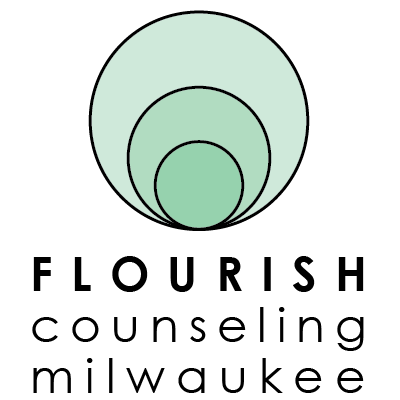When I was a teacher my face was my most powerful tool – despite the sticker charts displayed on the bulletin board (see my post about why I should have chucked those), despite the “prize box” pulled out weekly for students who had earned classroom “bucks” – despite any school wide incentive program designed to reward good behavior or gain compliance.
More accurately, it was my ability to regulate my emotions – and thereby control my facial expressions and tone of voice – that was one of my greatest assets in terms of connecting with at risk kids and helping them learn. Smiles, laughter, looks of empathy, attentive silences – these could often curtail the rudest comments and soothe unruly outbursts. Conversely, if I was feeling stressed, frustrated, angry, or otherwise dysregulated, I often had far more confrontational interactions with my students. No matter how hard I tried to hide my own emotions, they would inevitably show up on my face, in my tone of voice, and through my posture. Kids would pick up on this and feel defensive, even if the content of my words was neutral or positive.
Our ability to regulate our emotions – and, as a result, our facial expressions, tone of voice, and body language – has the same power with our own kids.
Mirror neurons play a major role in this phenomenon, and understanding how they work and how to harness their power can increase your ability to connect with your kids and parent more mindfully.
What Are Mirror Neurons?
Mirror neurons are a set of neurons in the brain that fire not only when you perform an action, but also when you observe someone performing an action. When we watch someone ride a bike, for example, the same mirror neurons fire in our brain as if we were riding a bike ourselves.
This occurs with facial expressions and tone of voice, as well. When we are confronted with someone who is angry – furrowed brow, tightened eyes – the mirror neurons associated with anger fire in us. This happens when we observe someone crying or laughing, as well. In a very literal sense, mirror neurons allow us to feel what others are feeling.
Mirror Neurons Foster Empathy
The existence of motor neurons in humans has been used to explain, in part, how we develop empathy – watching someone get hurt sets off the same neurons in our brain as if we were getting hurt.
Mirror neurons aren’t the only factor involved in human empathy (look for an upcoming blog post about the vagus nerve), but they are a good place to start when thinking about how we, as parents and educators, can facilitate and model this faculty for our kids.
Mirror Neurons Help us Attune to Our Children
Mirror neurons play an important role, then, in our ability to attune to our kids. If we are experiencing stress, negative emotions, or unresolved traumas from our own histories, these can play across our face and conflict with the message in our words. The brain picks up and registers the emotional signals on our face faster than it can process what we’re saying, so if our kids read emotions in our facial expressions that put them on alert it can lead them to respond to those facial expressions (and the emotions they’re conveying) rather than the content of our words.
If we are calm, however, we can help our kids regulate their own emotions, and we can ensure that we’re parenting from our values rather than simply reacting to a stressful situation. Here’s an explanation of what this kind of mindful parenting might look like:
7 Ways to Harness the Power of Mirror Neurons
The key to harnessing the power of your mirror neurons is to learn how to calm and soothe yourself when you are stressed or angry. Here are seven practices that will help you regulate your emotions and cultivate feelings that will help you attune to your kids.
1. Take time to experience emotions like gratitude, awe, and wonder, which have been linked to positive physical and emotional outcomes.
2. Increase your body awareness, particularly the muscles of your face. Check in with your body – what’s tense? Focus on your eyes and jaw. Practices that can help you do this include yoga, meditation, and progressive muscle relaxation. Recognize when you need to take a time out in order to relax.
3. Get a massage or a hug – find a way to incorporate more touch into your life. Touch, particularly from a loved one, releases oxytocin, a hormone responsible for lessening stress and cortisol and increasing trust and feelings of safety.
4. See with the eyes of a child.
5. Let go of unrealistic expectations to reduce your stress levels.
6. Be vulnerable.
7. Practice loving kindness meditation. Read why here.
Resources
Bernhardt, Boris C. & Singer, Tania. (2012). The Neural Basis of Empathy. The Annual Review of Neuroscience, 35, 1-23. Doi: 10.1146/annurev-neuro-062111-150536. http://greatergood.berkeley.edu/images/application_uploads/The_Neural_Basis_of_Empathy.pdf
Hughes, D.A. & Baylin, J. (2012). Brain-based parenting: the neuroscience of caregiving for healthy attachment. W.W.Norton & Company, Inc.: New York, NY.
Marsh, Jason. (2012). Do Mirror Neurons Give Us Empathy? Greater Good Science Center. Retrieved from http://greatergood.berkeley.edu/article/item/do_mirror_neurons_give_empathy.
Winerman, Lea. (2005). The mind’s mirror. American Psychological Association, 36(9). Retrieved from http://www.apa.org/monitor/oct05/mirror.aspx


